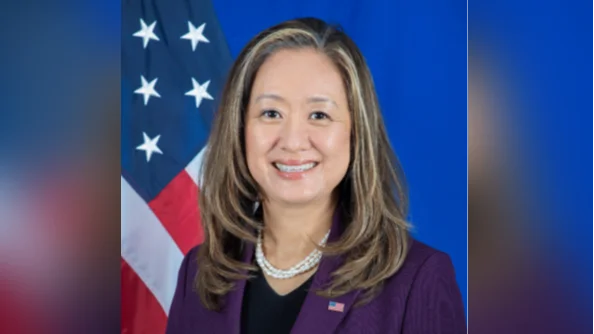Artifacts from the Godawaya Shipwreck are now on display at BMICH in Colombo, following the inauguration of an exhibition by U.S. Ambassador Julie Chung and Dr. Hiniduma Sunil Senevi, Minister of Buddhasasana, Religious, and Cultural Affairs. The event marks the completion of the multi-year Godawaya Shipwreck Project, which was funded through the U.S. Ambassadors Fund for Cultural Preservation (AFCP). This initiative is a joint effort between Sri Lanka and the United States to preserve what is considered the oldest known wooden shipwreck in the Asia-Pacific region, estimated to be over 2,100 years old.
Ambassador Chung emphasized the importance of maritime heritage and collaboration between both countries: “Maritime heritage is a story of connection — and today’s U.S.–Sri Lanka partnership continues that legacy. From ports to people, we are Indo-Pacific partners working together to safeguard security, ensure open commerce, and protect the futures of our nations. The Godawaya shipwreck is a reminder that secure sea lanes have powered prosperity for centuries and remain vital to both American and Sri Lankan interests today.”
The exhibition will be open to visitors from 11:00 a.m. on September 3, with hours extending from 10:00 a.m. to 5:00 p.m. on September 4 and 5. On display are artifacts such as pottery, grinding stones, glass and metal ingots, and carnelian beads—items that provide insight into ancient trade networks across the Indian Ocean.
Dr. Hiniduma Sunil Senevi commented on international cooperation in cultural preservation: “The partnership between Sri Lanka and the United States has been vital in safeguarding our heritage, not only in Godawaya but across the country. This project shows the strength of international cooperation in preserving history for future generations. I extend my sincere gratitude to the U.S. Embassy and the Ambassadors Fund for Cultural Preservation for their steadfast support. Together, we have ensured that this treasure of Sri Lanka’s history will remain accessible to our people and to the world.”
Dr. Nilan Cooray, Director General of Central Cultural Fund, highlighted broader implications for cultural understanding: “This exhibition and symposium are not just celebrations of the past; they are opportunities to inspire the future. The artifacts displayed here tell a story of connection, trade, and cultural exchange that transcends borders and time. I invite all Sri Lankans and visitors to explore this exhibition and discover the profound history that unites us.”
Launched in 2022 with AFCP funding support from the U.S Embassy, nearly 200 artifacts were recovered by MAU archaeologists during this project using advanced techniques like site surveying with comprehensive 3D modeling technology—a development regarded as having set new standards for underwater cultural heritage work globally.
The items recovered will become part of a permanent collection at Galle’s Maritime Archaeology Museum; an education program supported by AFCP aims to bring information about these discoveries into local schools.
Since its inception in 2001,the Ambassadors Fund for Cultural Preservation has provided backing for more than 1,300 projects worldwide—including over $1.3 million invested across seventeen initiatives within Sri Lanka—to conserve archaeological sites as well as museum collections.
The Maritime Archaeology Unit was founded under the Central Cultural Fund also in 2001 with responsibility for researching and conserving underwater heritage around Sri Lanka.

